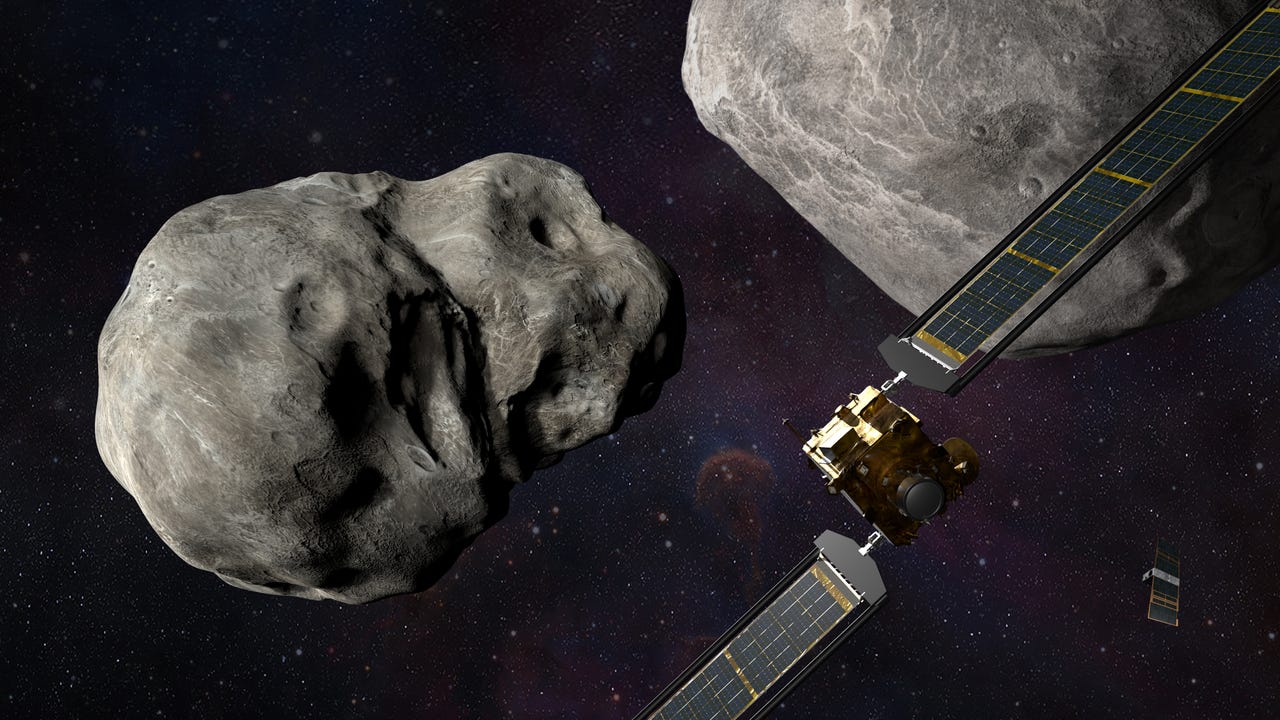
































The Double Asteroid Redirection Test (DART) will help determine if intentionally crashing a spacecraft into an asteroid is an effective way to change its course.
Image: NASANASA's Double Asteroid Redirection Test (DART) mission will change the trajectory of the Dimorphos asteroid by sending a spacecraft to collide with it on Monday, Sept. 26.
The best part is you will be able to watch as the spacecraft makes its way through space, approaches the asteroid, and then bangs into it.
Before you become alarmed, the asteroid does not pose any threat to Earth. Rather, the DART mission is meant to test the technology that could defend Earth from being struck by potential asteroid or comet hazards in the future -- basically to avoid the sort of collision that is now generally agreed to have doomed the dinosaurs from repeating itself any time soon.
Or as NASA put it: "The dinosaurs didn't have a space program to let them know what was coming, but we do," Katherine Calvin, chief scientist and senior climate advisor for NASA, told reporters last week.
Also: Everything you need to know about the NASA's DART mission
There will be two different ways you can watch the mission on Monday: a live broadcast and a quiet live feed of the Didymos Reconnaissance and Asteroid Camera for Optical navigation (DRACO) camera.
During the DART mission, DRACO will take images throughout the flight and send them back to Earth at a rate of one per second. NASA will be livestreaming the images on NASA TV starting at 2:30 pm PT/5:30 pm ET.
On Thursday, NASA reassured reporters that the DRACO camera is in great shape for launch.
"We have over 200,000 images already on the ground from DRACO," said Elena Adams, DART Mission systems engineer for Johns Hopkins APL.
The ability to see the images is a big deal, since no one will have ever seen the Dimorphos asteroid before the collision -- not even NASA. "We don't know what shape it is," Adams said during the briefing.
You can also tune in to the live coverage, which begins at 3 pm PT/6 pm ET on NASA TV. The collision is set to occur at 4:14 PM pm/7:14 pm ET. NASA assured its audience that the images will be "something spectacular" in a briefing on Sept. 12.
 Hot Tags :
Innovation
Space
Hot Tags :
Innovation
Space